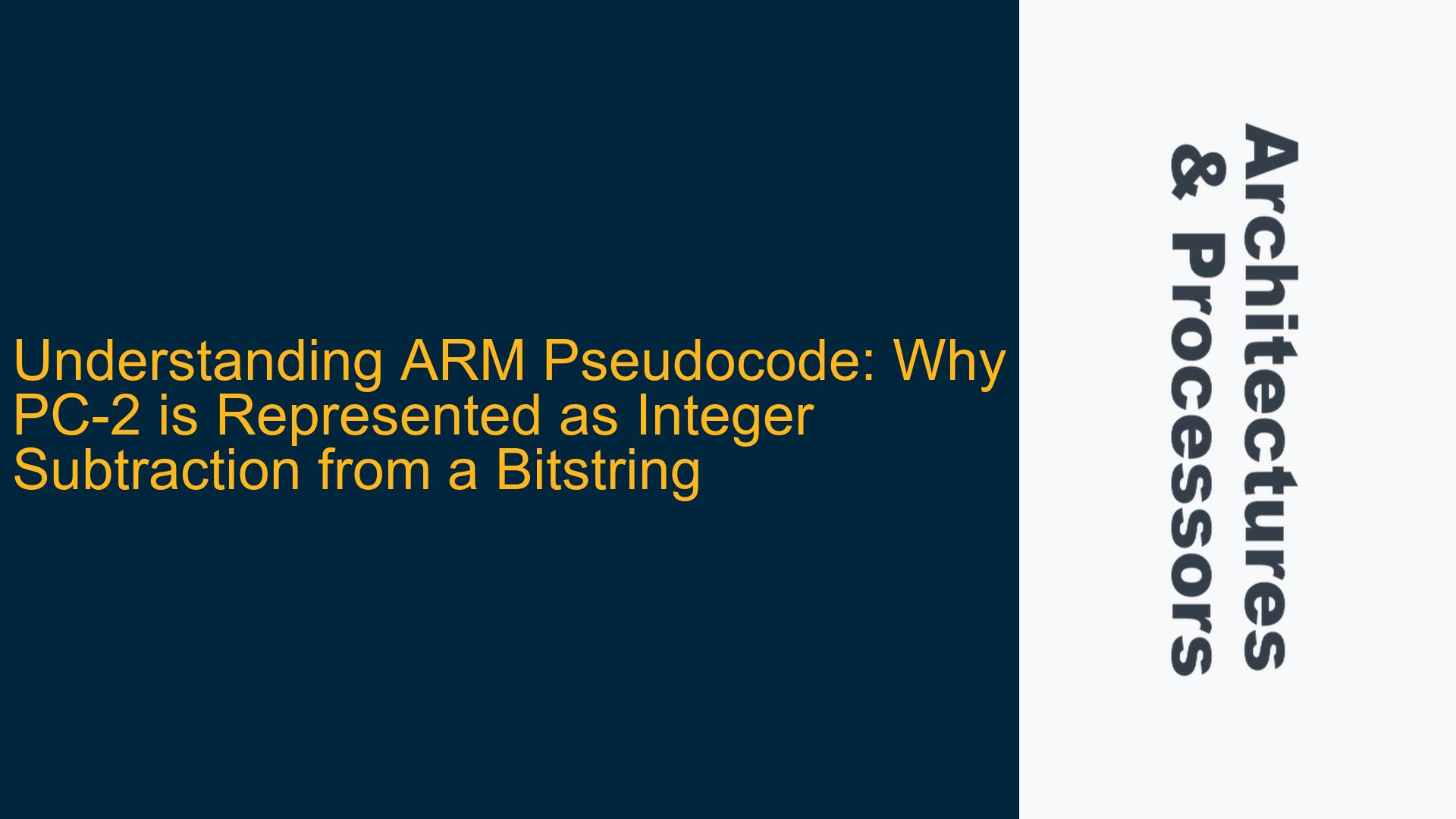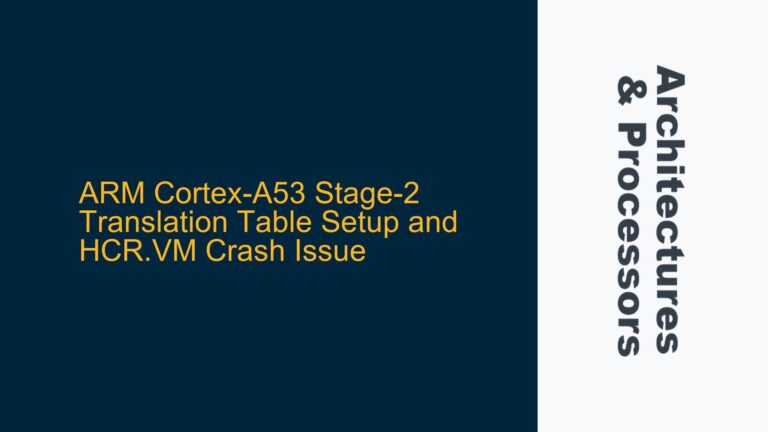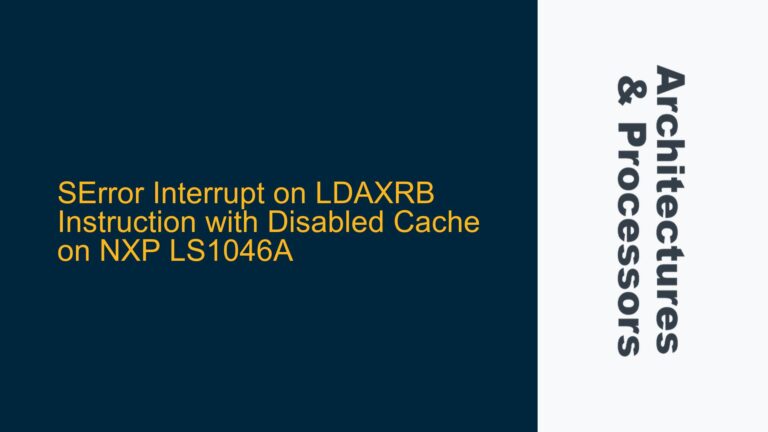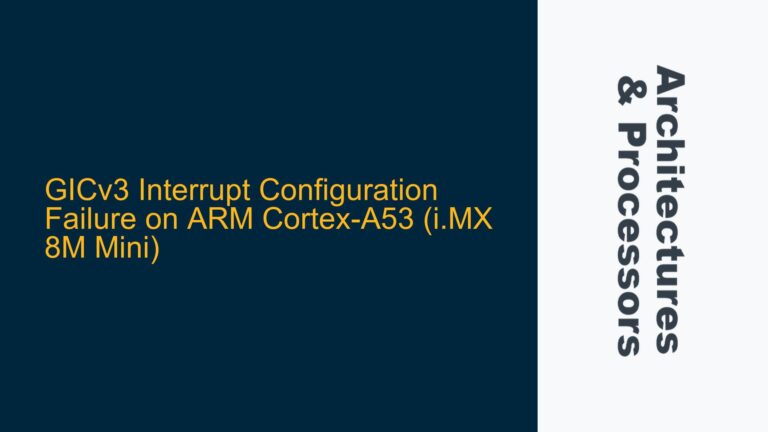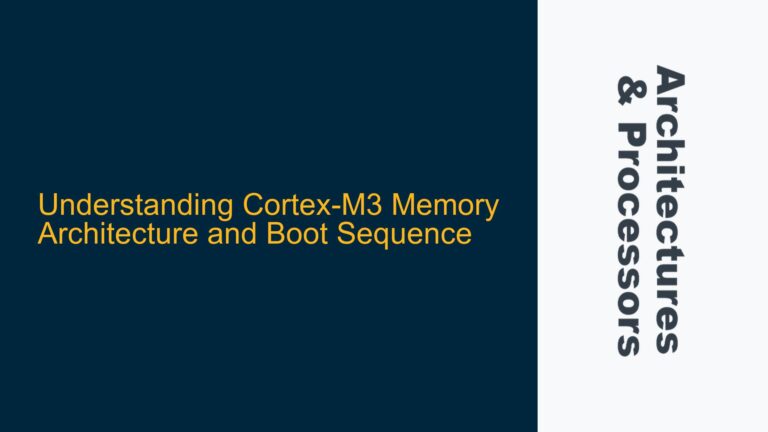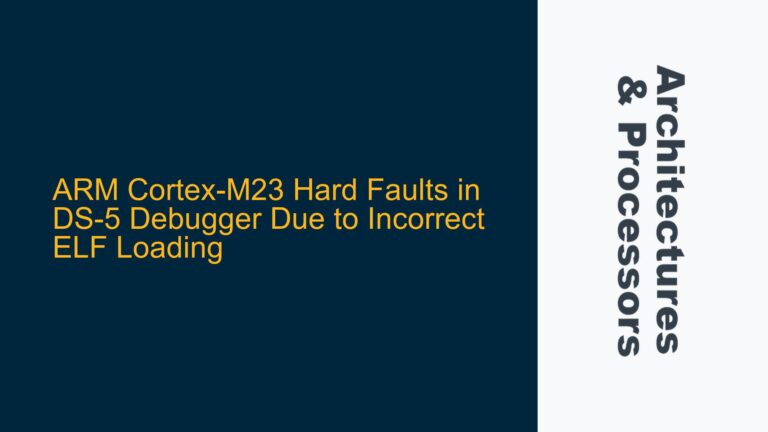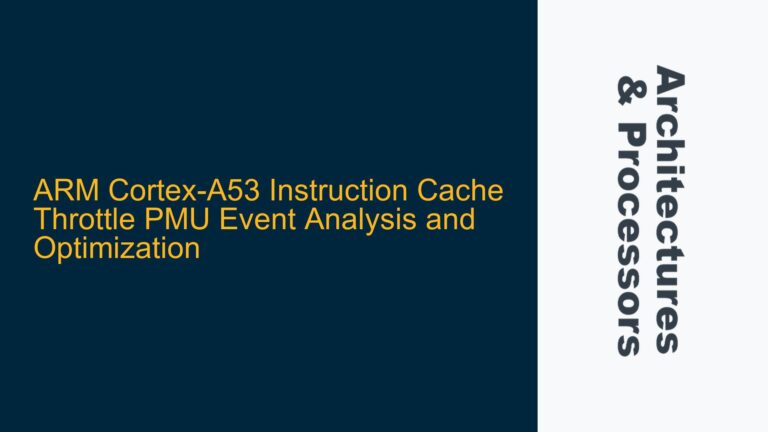ARM Pseudocode Arithmetic: Bitstring and Integer Operations in PC Relative Addressing
The ARM architecture employs pseudocode to describe the behavior of instructions and operations in a human-readable yet precise manner. One such operation involves the subtraction of an integer from a bitstring, specifically in the context of Program Counter (PC) relative addressing. This operation is documented in the ARM Architecture Reference Manual (DDI0487G_b_armv8_arm.pdf) under Appendix K14, which defines the pseudocode semantics for arithmetic operations. The manual states that an integer can be subtracted from a bitstring to allow operations like PC-2, which is a common requirement in ARM’s instruction set architecture. This section delves into the technical rationale behind this operation, focusing on the interplay between bitstrings, integers, and the Program Counter.
In ARM pseudocode, a bitstring represents a sequence of bits that can be interpreted as a binary number, while an integer is a standard numerical value. The Program Counter (PC) is a special register that holds the address of the next instruction to be executed. In ARM architectures, the PC is often used in relative addressing modes, where instructions reference memory locations relative to the current PC value. The operation PC-2 is particularly significant because it aligns with the ARM instruction set’s requirements for certain branch and load/store operations.
The subtraction of an integer from a bitstring in ARM pseudocode is a deliberate design choice to accommodate the architectural constraints of ARM processors. ARM instructions are typically 32 bits wide, and the PC is always aligned to a 4-byte boundary. However, certain instructions, such as those involving Thumb mode or specific branch offsets, require addressing that is not strictly 4-byte aligned. The operation PC-2 allows the pseudocode to represent these scenarios accurately, ensuring that the behavior of the processor is correctly modeled.
The ARM Architecture Reference Manual specifies that the subtraction of an integer from a bitstring is valid only in specific contexts, such as PC relative addressing. This is because the bitstring representing the PC must be treated as a numerical value for arithmetic operations, even though it is fundamentally a sequence of bits. The subtraction operation effectively converts the bitstring into a numerical value, performs the arithmetic, and then converts the result back into a bitstring. This conversion is implicit in the pseudocode and is necessary to maintain consistency with the underlying hardware implementation.
Bitstring Representation and Integer Arithmetic in ARM Pseudocode
The core issue revolves around the representation of the Program Counter (PC) as a bitstring and the need to perform arithmetic operations on it. In ARM pseudocode, the PC is treated as a bitstring because it represents a memory address, which is inherently a binary value. However, arithmetic operations like subtraction require numerical values, which introduces a need for type conversion. The ARM Architecture Reference Manual addresses this by allowing the subtraction of an integer from a bitstring, provided the operation is semantically valid.
The subtraction of an integer from a bitstring in ARM pseudocode is not a general-purpose operation but is specifically designed to handle PC relative addressing. The PC-2 operation is a common example, where the integer 2 is subtracted from the bitstring representing the PC. This operation is necessary because ARM instructions often reference memory locations relative to the current PC value, and the offset may not always be a multiple of 4. For instance, in Thumb mode, instructions are 16 bits wide, and the PC may need to reference a memory location that is 2 bytes away from the current instruction.
The ARM Architecture Reference Manual explicitly states that the subtraction of an integer from a bitstring is allowed only in the context of PC relative addressing. This restriction ensures that the operation is used correctly and does not lead to undefined behavior. The manual also specifies that the result of the subtraction must be a valid bitstring, meaning it must represent a valid memory address. This requirement is critical for maintaining the integrity of the processor’s operation and ensuring that the pseudocode accurately models the hardware behavior.
The subtraction operation in ARM pseudocode is implemented using a combination of type conversion and arithmetic logic. The bitstring representing the PC is first converted to an integer, the subtraction is performed, and the result is converted back to a bitstring. This process is transparent to the programmer and is handled automatically by the pseudocode interpreter. The conversion ensures that the arithmetic operation is performed correctly and that the result is a valid bitstring that can be used in subsequent operations.
Resolving PC-2 Arithmetic in ARM Pseudocode: Best Practices and Implementation
To resolve the issue of subtracting an integer from a bitstring in ARM pseudocode, it is essential to understand the underlying principles and follow best practices. The ARM Architecture Reference Manual provides detailed guidelines on how to perform this operation correctly, ensuring that the pseudocode accurately reflects the behavior of the hardware. This section outlines the steps required to implement the PC-2 operation in ARM pseudocode, along with potential pitfalls and solutions.
The first step in implementing the PC-2 operation is to ensure that the bitstring representing the PC is correctly interpreted as a numerical value. This requires an implicit type conversion, which is handled by the pseudocode interpreter. The conversion process involves treating the bitstring as a binary number and converting it to an integer. This step is critical because it allows the arithmetic operation to be performed on the PC value.
Once the bitstring has been converted to an integer, the subtraction operation can be performed. The integer 2 is subtracted from the PC value, resulting in a new numerical value. This value must then be converted back to a bitstring to represent the new memory address. The conversion process ensures that the result is a valid bitstring that can be used in subsequent operations.
One potential issue with this operation is the alignment of the resulting memory address. In ARM architectures, the PC is always aligned to a 4-byte boundary, and the result of the PC-2 operation may not be aligned. This can lead to undefined behavior if the resulting address is used in an instruction that requires alignment. To avoid this issue, the ARM Architecture Reference Manual specifies that the result of the subtraction must be a valid bitstring, meaning it must represent a valid memory address. This requirement ensures that the operation is performed correctly and that the result is usable in subsequent operations.
Another potential issue is the handling of negative offsets. In some cases, the integer subtracted from the PC may be negative, resulting in a memory address that is before the current PC value. This scenario is valid in ARM architectures, but it requires careful handling to ensure that the resulting address is within the valid memory range. The ARM Architecture Reference Manual provides guidelines on how to handle negative offsets, ensuring that the operation is performed correctly and that the result is a valid memory address.
In conclusion, the subtraction of an integer from a bitstring in ARM pseudocode is a critical operation that enables PC relative addressing. The operation is implemented using a combination of type conversion and arithmetic logic, ensuring that the result is a valid bitstring that can be used in subsequent operations. By following the guidelines provided in the ARM Architecture Reference Manual, developers can ensure that the operation is performed correctly and that the resulting memory address is valid. This approach ensures that the pseudocode accurately models the behavior of the hardware and that the processor operates as intended.
